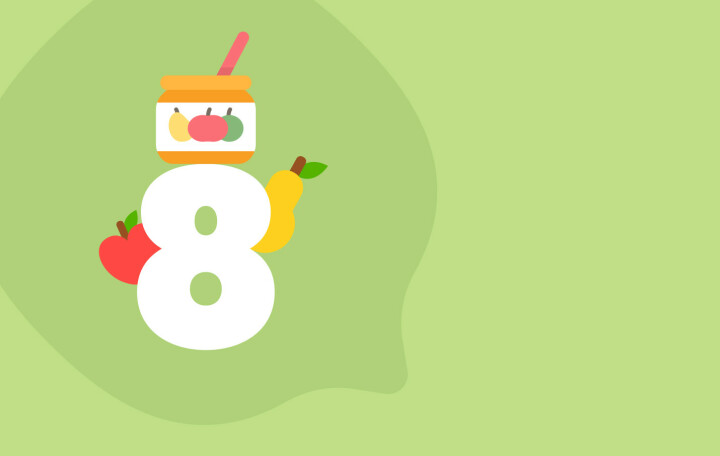
10 golden rules for diversifying baby’s diet
Between 4 and 6 months, baby can begin to explore new flavours and textures.
A new experience which they will really enjoy!

1) Wait to get the go-ahead from your paediatrician
Only your paediatrician is qualified to say whether or not your baby can start food diversification.

2) Milk must remain the main basis of baby’s diet for the first 6 months
In parallel to their food diversification, baby should continue to consume the usual quantity of milk for several months. Food is introduced in addition and not as a substitute!

3) Start with cereals...
From 6 months, cereals can be added to baby’s bottle to start their diversification off gently and using the liquid base with which they are familiar.

4) ... and “gentle” vegetables
Offer baby a jar of vegetable baby food or a home-made blend at lunchtime.
Always give baby vegetables without added salt. Let them taste the vegetables, then continue with their usual milk. Opt for vegetables that do not have a particularly strong flavour and which are easily digested such as green beans, pumpkin or carrots. From 9 months, you can introduce fibre-rich vegetables with stronger flavours. Choose vegetables depending on baby, the most important thing being to offer a maximum variety of different flavours so that they try lots of different flavours and extend their dietary repertoire.

5) Focus on single flavours
Only introduce one different vegetable each day. This way baby will learn to distinguish between them and it also makes it easier for you to identify any potential allergies. Introduce a maximum number of flavours before baby is 12 months old.

6) Persevere in spite of refusal
If baby doesn’t want to taste a particular vegetable, don’t force them! Instead offer it to them again a different day, prepared and presented differently, until they accept it. The same food can be offered up to 10 times, but not consecutively!

7) The importance of fat
Fat is very important for their cerebral development: add a teaspoon of fat to each of baby’s meals. Favour oils that are rich in omega 3 such as rape seed oil (or walnut oil), but do not cook them. Alternate with other vegetable oils (sunflower, peanut) or butter or cream from time to time.

8) Integrate fruit
15 days after introducing vegetables, you can start offering baby fruit purées. Baby will prefer their sweet flavour, but remember to keep on giving them vegetables at other meals!

9) Mixing flavours
Are fruits such as apricot or plum too sour for baby?
Mix them with a little apple or pear for a more gentle flavour.
Favour single flavours wherever possible, however, as with vegetables.

10) Moving from blended food to food with chunks
At around 8 months, offer baby less finely-blended food, followed by crushed chunks of vegetable or fruit. Food with chunks is introduced at around 12 months when baby is eating a diverse range of meals.

